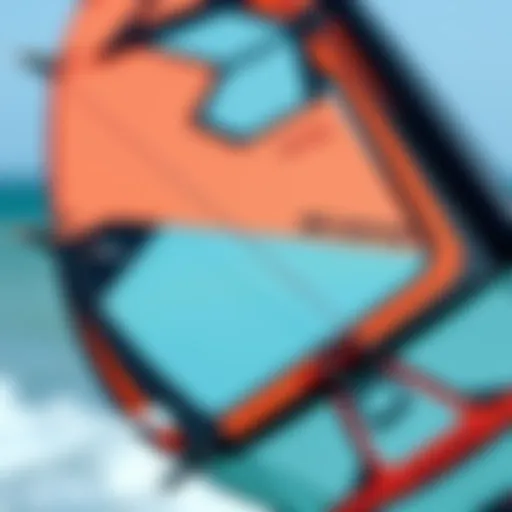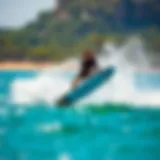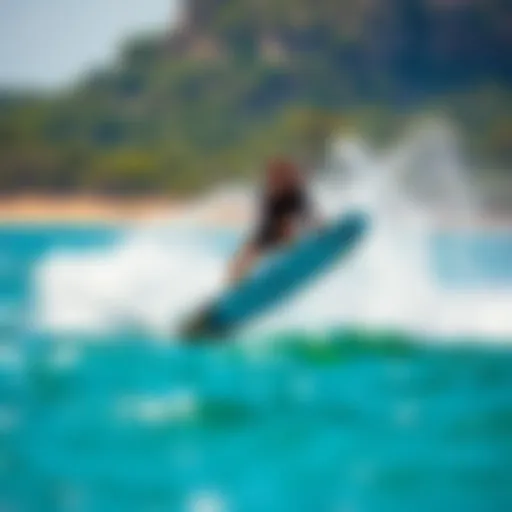Understanding Kite Surfing Prices: A Comprehensive Guide
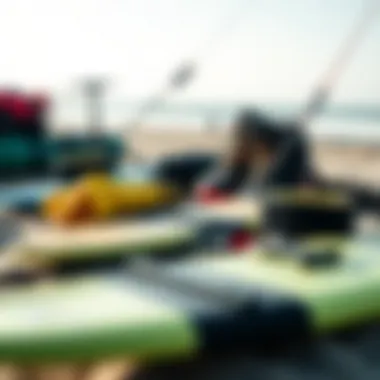
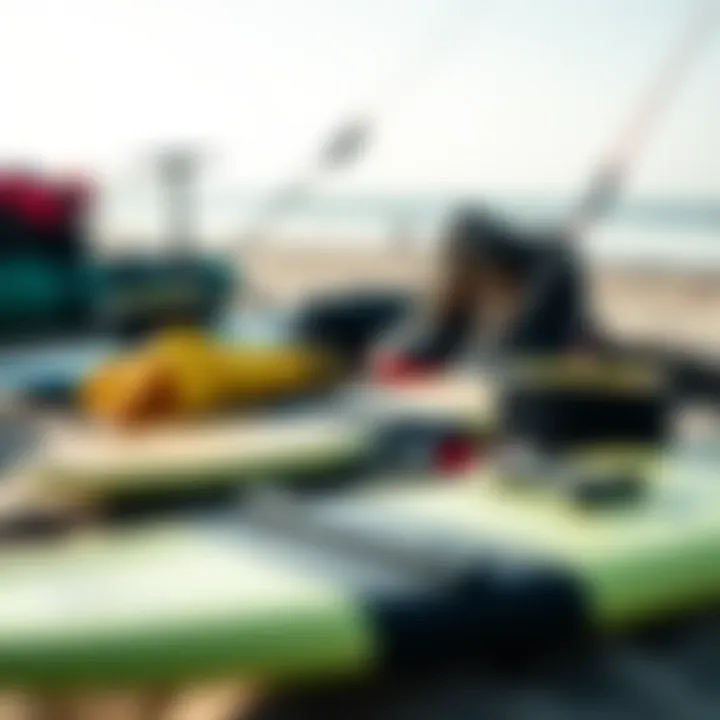
Intro
Engaging in kite surfing is a thrilling adventure that lets you harness the elements in high winds and crashing waves. However, before you make that leap onto the board, it's crucial to understand the financial landscape that comes with this sport. Kite surfing isn't just about the rush of gliding over water; it's also about the investment you make in gear, lessons, and travel.
This article will walk you through the costs associated with kite surfing. By breaking down the various elements—from essential equipment to travel fees—you'll gain a clear perspective on what financial layout you should anticipate. This insight will be beneficial whether you're a beginner eager to start riding the wind or a seasoned kiteboarder looking to optimize your spending.
We’ll cover different aspects—gear insights, instructional costs, regional pricing variations, and other financial considerations. Equipped with this knowledge, you will be better prepared to budget for your kite surfing journey.
Gear Insights
The kite surfing world is flooded with gear options, and knowing what to purchase can feel like trying to catch the wind in your hands. Investing wisely in gear can significantly affect your experience and overall enjoyment of the sport.
Latest Gear Reviews
With every passing season, new gear hits the market. Prices and effectiveness can vary immensely. Here’s a brief look at some standout equipment:
- Kites: Brands like Duotone and Naish regularly update their range, introducing models that promise better performance and control. Check reviews on sites like kiteforum.com for the latest insights from users.
- Boards: Directional or twin-tip boards? The choice lies with you. A good quality board from Slingshot or Tabou can range from $700 to $1400, depending on features.
- Control Bars and Harnesses: Often overlooked, a suitable harness can make or break your ride. Look at options like Mystic or ION for comfortable, durable options in the price range of $150 to $400.
Keeping an eye on seasonal sales can also help you snag a deal on last year's models without compromising on quality.
Essential Gear for Beginners
As you dip your toes into kite surfing, focus on the basics that will equip you without breaking the bank:
- Kite: A mid-sized kite (about 10-12 meters for most conditions) is essential, and should cost anywhere from $600 to $1200.
- Board: A beginner-friendly twin-tip board can be closely about $400.
- Safety Gear: Don’t skimp here; invest in a helmet and impact vest that each costs around $100 to $200. Safety first, always.
Understanding the importance of quality gear can lead to a better learning experience and more enjoyable sessions on the water.
"Investing in good equipment right from the start can mean fewer headaches and more fun in the long run."
As we move forward, we will dive into the techniques and tips that can help you accelerate your learning and enhance your skills.
Prelims to Kite Surfing Economics
Diving into the world of kite surfing isn't just about the thrill of riding the waves; it’s also about understanding the financial currents that influence every aspect of this exhilarating sport. Kite surfing economics encompasses everything from equipment choices to lesson costs, making it crucial for both novices and seasoned riders to grasp the economic implications of their decisions.
The importance of delving into kite surfing prices cannot be overstated. Understanding the associated costs allows enthusiasts to budget effectively and make informed choices. This knowledge helps kiteboarders avoid overspending on equipment or lessons that do not align with their skill level or aspirations.
Key Elements of Kite Surfing Economics
A few specific elements truly highlight why the economics of kite surfing matters:
- Equipment Quality and Longevity: Investing in high-quality gear often translates to better performance and durability, which in the long run can save a surfer money on replacements.
- Brand Perception: Some brands command premium pricing due to their reputation and track record, while lesser-known names may provide good value but with less assurance of quality. Navigating this landscape requires understanding brand dynamics.
- Seasonal Fluctuations: Prices can vary depending on the time of year. For example, during the off-season, many vendors slash prices. Recognizing these patterns helps surf enthusiasts save that hard-earned cash.
To illustrate the relevance of these points, consider a scenario where an enthusiastic beginner opts to skimp on gear. This decision may lead to frequent replacements or, even worse, a frustrating riding experience, potentially discouraging them from pursuing the sport. Hence, knowing how kite surfing economics works is essential for maximizing enjoyment.
Epilogue
In summary, having a firm grasp of kite surfing economics enriches the overall experience and supports informed decision-making. The knowledge of costs related to gear, lessons, and other financial aspects enables riders to navigate the market effectively, ensuring they invest in their passion wisely. By arming oneself with insights into the financial landscape, kite surfers can focus on what truly matters—enjoying the ride.
Key Components Influencing Kite Surfing Prices
Kite surfing is more than just a thrilling sport; it sits within a complex web of economics shaped by various factors that influence prices. Understanding these components not only aids enthusiasts in budgeting for their adventure but also equips them with knowledge that contributes to making sound purchasing choices. A clear grasp of the elements affecting cost can lead to more fulfilling experiences on the water.
Quality of Equipment
The equipment you choose can determine not just your enjoyment but also your safety while engaging in kite surfing. High-quality gear often comes with a heftier price tag, but it also tends to perform better and lasts longer. Opting for a top-tier kite over an off-brand one may save you money in the long haul, as premium brands invest in technology and materials that enhance durability and performance.
For example, a well-constructed kite made from ripstop nylon is likely to withstand harsher winds and rough treatment compared to a cheaper alternative that might rip easily. This durability ensures that you can get more time on the water without the frequent need for replacements, which can add up to significant costs over time. Thus, when evaluating quality, one should not merely focus on the upfront cost but also consider the long-term value and peace of mind that quality gear provides.
Brand Reputation
Brand reputation plays a crucial role in the kite surfing world. Premium brands like Duotone and Naish have cultivated strong trust among the kiteboarding community, and for good reason. These brands invest heavily in research, development, and customer service, which translates into products that rarely disappoint.
Fans of these brands often cite a notable difference in performance and reliability. Furthermore, well-known brands usually come with better resale value. For instance, if you decide to sell a used kite from a reputable brand, you can generally expect to recoup more of your original investment compared to lesser-known brands. A solid brand reputation often equates to a more substantial initial investment but promises quality that you can rely on—both on the water and in market terms.
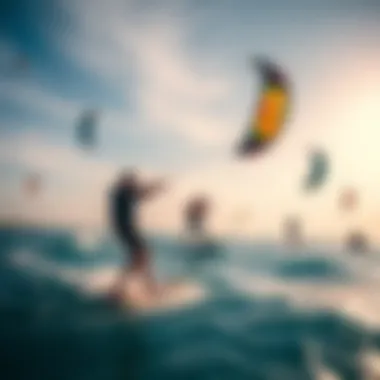
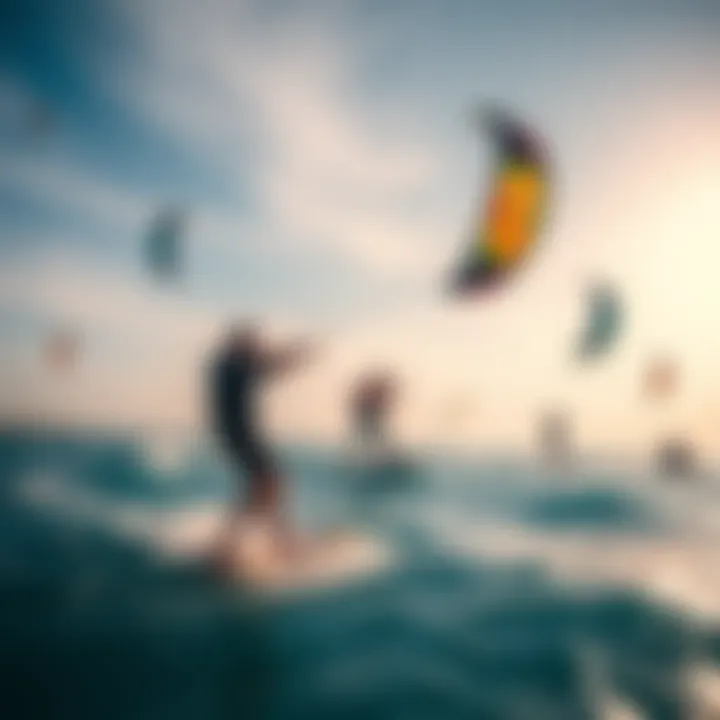
Seasonal Demand Variations
Kite surfing isn't uniform year-round; it is heavily influenced by seasonal demand, which can affect pricing significantly. During peak kite surfing seasons, typically aligned with favorable weather conditions and holiday periods, prices for equipment and lessons may soar. Conversely, during the off-peak months, discounts and bargains become commonplace.
For those willing to wait for the right timing, the offseason can present opportunities to snag quality gear at reduced prices. Seasonal sales can lead to considerable savings, especially if one has their eyes set on new models or gear. According to the trends seen in various regions, it often pays to do your homework ahead of schedule and plan your purchases in alignment with seasonal deals.
Overall, understanding these key components gives kite surfers insights that can enhance their experience while keeping their wallets in check. By considering the quality of equipment, the weight of brand reputation, and the fluctuations caused by seasonal demand, enthusiasts can navigate the financial aspects of kite surfing more effectively.
Breakdown of Equipment Costs
Understanding the breakdown of equipment costs is essential for anyone who finds themselves drawn to the windswept beaches and adrenaline-pumping waves of kite surfing. Knowledge about the different elements that contribute to the overall expense can help you formulate a budget that meets your needs without breaking the bank. Making informed decisions regarding your equipment can lead to enhanced performance and durability, ensuring that you get the most out of your investment.
Kites and Their Price Range
Kites are arguably the heart of the kite surfing experience, and their pricing can vary widely based on several factors. On the lower end, you can expect to find beginner kites starting around $400 to $600. These are typically simpler in design and made from less expensive materials. For enthusiasts looking to push their skills, the price can go up to $1,500 or more for top-tier models designed for specific wind conditions or tricks.
Factors influencing kite costs include:
- Material Quality: Higher-end kites often use advanced fabrics that resist wear and weather.
- Design Complexity: Kites designed for better performance feature intricate shapes and balances, making them pricier.
- Size Variations: Larger kites command higher prices, as they require more material and engineering.
It's wise to keep in mind that purchasing a used kite can lead to significant savings, though it is crucial to scrutinize the equipment for wear and tear before closing the deal.
Boards: A Comparative Analysis
When it comes to boards, the investment will depend on your style of riding and preferences. A standard twin-tip board can cost anywhere from $300 to $800. Freestyle boards, geared towards advanced riders wishing to perform tricks, might set you back $700 or more. Meanwhile, directional boards, popular with wave riders, usually fall in a similar price bracket.
Things to consider when choosing a board include:
- Rider Skill Level: Beginners should look for boards that are stable and forgiving. Advanced riders may prefer something more responsive.
- Board Volume and Size: Heavier or taller riders might require larger boards for optimal performance.
- Construction Type: Composite materials provide a lightweight yet sturdy option, affecting the price.
Harnesses and Other Accessories
While the kite and board form the nucleus of your setup, harnesses and other accessories are indispensable for a seamless kitesurfing experience. Harness prices can range from $100 to $500. It’s a crucial piece, as the quality and fit can dramatically affect your performance and comfort on the water.
Additional accessories you may need:
- Safety Leashes: Ranging from $40 to $100; they keep your kite tethered to you, especially in emergency scenarios.
- Bags and Repairs Kits: Don’t forget about storage bags for travel or repair kits, which can add another $30 to $200 to your total cost.
In sum, an understanding of each component’s role and associated costs can help you navigate the financial waters of kite surfing effectively. It's not just about the initial expenditure; considering the long-term use and durability can lead to smarter purchasing decisions that benefit both your wallet and your riding experience.
Lessons and Instruction Costs
Understanding the costs of lessons and instruction is crucial for anyone looking to dive into kite surfing. Whether you are a total beginner or looking to refine your skills, the right guidance can significantly affect not just your safety, but your overall enjoyment of the sport. While some may think of lessons as an optional luxury, they are actually an essential investment that pays dividends, especially in this fast-paced water sport where skill development is paramount.
Types of Lessons Available
Kite surfing lessons come in various forms, designed to meet different needs and learning preferences. Here are some common types:
- Beginner Lessons: Focused on teaching the basics of kite control, safety protocols, and general equipment handling. These lessons are usually delivered through a structured curriculum and often last anywhere from a few hours to several days.
- Intermediate and Advanced Lessons: Cater to those who have grasped the fundamentals and seek to elevate their skills. These classes may emphasize specific techniques like jumping or navigating choppy waters discernibly.
- Private Lessons: Provide personalized instruction tailored to individual goals. Instructors often adjust the pace and focus based on student performance.
- Group Lessons: Offer a social learning environment where students can share the experience with others. This format tends to be less expensive per person, but can also be less focused on individual needs.
Each type offers its unique advantages, so weigh these options based on your learning style and budget.
Estimated Lesson Pricing
The costs of kite surfing lessons can vary widely based on location, instructor expertise, and lesson type. On average, here's what you might expect:
- Beginner Group Lessons: Price typically ranges from $100 to $200 for a half-day session, which usually includes equipment rental.
- Private Lessons: These can set you back around $150 to $300 for the same duration. It may sound steep, yet the tailored approach often leads to quicker skill acquisition.
- Multi-day Packages: Many schools offer discounts for comprehensive programs over several days, bringing the effective cost per lesson down.
While investment in lessons might seem substantial at first glance, consider that gaining proficiency can expedite your progression and enjoyment.
Group vs. Private Lessons
Deciding between group and private lessons can feel like navigating murky waters, but weighing the pros and cons can illuminate your path.
Group Lessons:


- Pros:
- Cons:
- More affordable per person.
- Fun social atmosphere, which may ease anxiety for beginners.
- Opportunities to learn from observing peers.
- Instructor's attention is divided among several students, potentially limiting personalized feedback.
- Lesson pace may not align with individual needs.
Private Lessons:
- Pros:
- Cons:
- One-on-one attention allows for tailored instruction based on your personal performance.
- Flexibility in scheduling and lesson pace.
- Higher cost can be a barrier for some.
- Less networking opportunities with fellow learners.
Ultimately, your decision should hinge on personal preferences and financial considerations. Remember to do your homework—researching local schools and instructors can help you find the best fit for your goals.
Investing in quality lessons can save you time, money, and spills down the line, setting a solid foundation for your kite surfing journey.
Regional Price Differences
When diving into the world of kite surfing, it's vital to be aware of how regional price differences can shape your commitment to the sport. The prices tag attached to gear, lessons, and accommodations can swing dramatically depending on where you're located or where you intend to kite. This section aims at illuminating how geography plays a pivotal role in your financial planning for kiteboarding, offering insights on what you can expect and how to navigate these financial waters.
Popular Kiteboarding Destinations
Among the many global hotspots, a few stand out as Meccas for kite surfers, each with unique characteristics that affect pricing. Locations like Tarifa in Spain, Cabarete in the Dominican Republic, and Hawaii serve as prime examples, where the local market can dictate the price of lessons and gear rentals.
In Tarifa, for instance, the competitive nature of kiteboarding schools often leads to reasonable lesson prices, sometimes as low as 50 euros for a two-hour session. However, the cost of gear rentals may spike during peak season, reflecting the influx of tourists eager to harness the winds.
Conversely, Cabarete offers vibrant nightlife and beautiful beaches but might see higher rental costs for equipment due to its popularity among both locals and tourists. This price buoyancy might reflect not only the demand but also the quality of schools and equipment provided.
"The best kite surfing spots can sometimes feel like a double-edged sword; stunning vistas come with a price tag."
Local Market Influences
Local economies significantly influence the kitesurfing scene, as the supply of equipment, labor costs, and local demand determine the overall landscape of pricing. In cities where kite surfing is a booming industry, prices for gear and lessons can be quite competitive, benefiting the consumers. For instance, in a region saturated with shops and schools, you might find promotions and packages that make entry cheaper.
On the flip side, in lesser-known areas where kite surfing isn't the main draw, prices might be inflated due to a lack of competition. Here’s a snapshot of elements affecting the local market:
- Cost of Living: Areas with higher living costs often see elevated prices for both rentals and lessons.
- Availability of Gear: Locations with fewer shops may offer limited choices at higher rates.
- Seasonality: Local beaches can often swing from bustling hotspots to ghost towns depending on the season, impacting service prices tremendously.
In summary, understanding regional price differences is fundamental to budgeting effectively for your kite surfing endeavors. By analyzing popular destinations and local market dynamics, you'll position yourself to make better-informed choices as you gear up for your kiteboarding adventures.
Additional Financial Considerations
When diving into the world of kite surfing, it's easy to focus solely on the gear and the thrills that come with it. However, there are additional financial aspects that can either make or break your budget. Aiming to gloss over these can lead to some unpleasant surprises down the line. In this section, we’ll explore critical factors that kiteboarders should keep in mind to enjoy the sport without busting their wallets.
Travel Costs for Kiteboarding Trips
Kite surfing is often linked with breathtaking locations worldwide, from the warm waters of Cape Verde to the windswept beaches of the Outer Banks. But, getting there doesn’t come free. Here are key factors to consider:
- Transport: Flights and car rentals can be hefty. Prices fluctuate based on the season, so booking in advance helps you snag a better deal.
- Accommodation: Are you planning on staying near the kite spot? Hotels and resorts can take a chunk out of the budget. Sometimes, renting a local place or opting for hostels might relieve some financial strain.
- Local Transport: If your preferred kiteboarding destination doesn’t let you walk to the beach, factor in public transport or taxi charges.
Before you set off, comparing costs can help you save significant amounts. Have a flexible approach and look for package deals that combine travel and stay.
Insurance and Safety Equipment
Engaging in kite surfing undoubtedly comes with enjoyment, but it also bears risks. To protect your investment and yourself, consider some important financial factors:
- Insurance Packages: Look for specialized insurance that covers extreme sports. Regular travel insurance often excludes kiteboarding, potentially leaving you liable for any mishaps.
- Safety Gear Costs: Life jackets, helmets, and impact vests are essential for safe kite surfing. Investing in reliable safety equipment not only gives you peace of mind but may reduce insurance premiums.
- Emergency Funds: It's wise to have an emergency fund set aside for unforeseen accidents, be it personal injury or gear failure, which can happen without a moment's notice.
“Preparation is the key to success.”
By ensuring you have thorough insurance coverage and proper safety gear, you prevent a minor problem from exploding into a major one.
Maintenance and Repairs
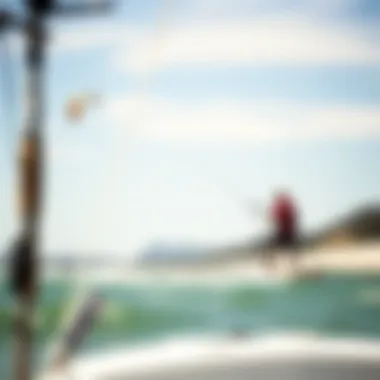
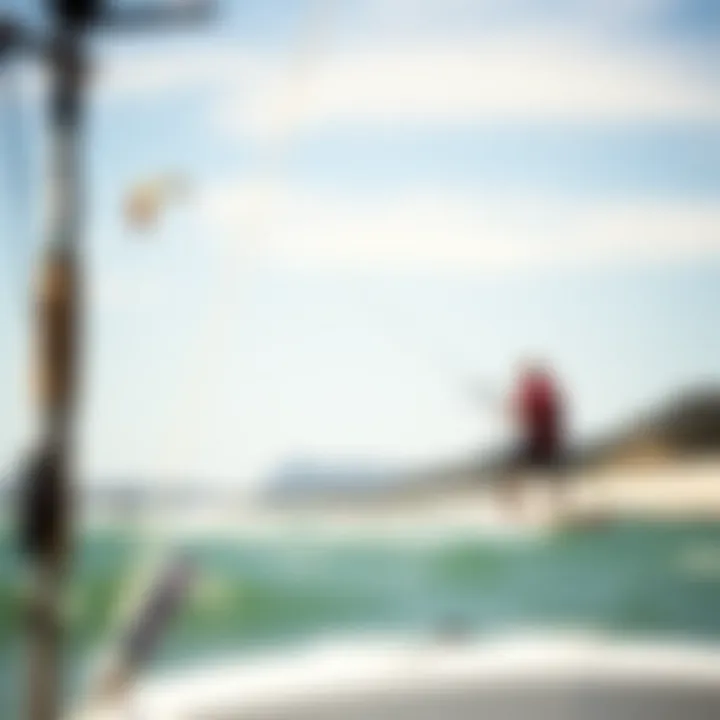
While quality gear is designed to withstand wear and tear, kite surfing equipment isn’t impervious to damage. It’s crucial to factor in the costs associated with upkeep:
- Routine Maintenance: Regular checks can extend the lifespan of your gear. This includes cleaning your kite after use, checking for tears, and replacing parts as necessary.
- Repair Costs: Depending on the damage, repairs can be pricey. It’s essential to know some DIY techniques, such as how to patch a kite, which can save you from costly professional services.
- Storage Considerations: Proper storage prolongs equipment lifespan. Consider investing in a suitable storage solution if you live in a damp or harsh climate.
By understanding these additional financial considerations, kiteboarders can navigate the sport with greater ease and less financial strain. It’s not simply about making the initial investment; it’s about taking a holistic view that considers ongoing costs involved in this exhilarating sport.
Budget-friendly Options for Enthusiasts
Navigating the world of kite surfing can sometimes feel like setting sail in uncharted waters, especially when it comes to budgets. Many enthusiasts, whether they're just starting out or looking to upgrade their gear, find themselves grappling with the high costs that can be associated with this exhilarating sport. However, with a bit of savvy and some searching, kiteboarders can uncover a plethora of budget-friendly options that not only save money but also deliver quality and performance.
Used Equipment Market Insights
One of the most significant players in the budget-friendly arena is the used equipment market. Just like finding a rare gem in a thrift store, shopping for second-hand gear can lead to remarkable discoveries at a fraction of the retail price. The key here is to know where to look and what to check for.
When scouting for used kites, boards, and harnesses, platforms like eBay, Craigslist, or Facebook Marketplace can be treasure troves. Connecting with local kiteboarding communities can also yield leads on gently used gear that might not be advertised widely.
However, all that glitters is not gold. Before making a purchase, do a thorough inspection of the equipment. Look for signs of wear and tear, such as frayed lines or punctures in the kite material. One should also inquire about the history of the equipment—how often it was used, and under what conditions. Trust your gut; if something seems off, it likely is.
"Buying used is not just about saving money; it's about being resourceful and informed. Every piece of equipment has a story; make sure you know it."
Seasonal Sales and Discounts
Timing can be as crucial as technique in kite surfing, especially when it comes to scoring deals. Seasonal sales and discounts are often overlooked opportunities for budget-conscious buyers. As the kiteboarding season winds down, many retailers will start discounting their inventory to make way for the next year's models. This can be a perfect time for enthusiasts to snag high-quality gear at significantly lower prices.
In addition to typical sales during the off-season, promotional events and holiday sales can also offer substantial savings. Signing up for newsletters from kiteboarding shops can keep you in the loop about upcoming sales or exclusive discounts. Participating in local events or festivals often brings opportunities to purchase gear at reduced prices, sometimes with the added bonus of trying before buying.
Moreover, don't shy away from negotiating prices, especially with individual sellers. Many times, they are willing to haggle rather than let an item sit unsold.
In essence, when you align your shopping with key sales periods, you're not just counting pennies; you're strategically planning your kite surfing adventure without breaking the bank.
If you want to dive deeper into specific stores that offer great deals, checking websites like Kiteboarding.com or Wikihow's guide on buying used kiteboarding gear can be beneficial.
The Value of Investing in Quality Gear
When it comes to kite surfing, the gear you choose can significantly influence your experience on the water. There’s more than just the price tag to consider; the value of investing in quality gear is multi-faceted and well worth understanding. High-quality kiteboarding equipment not only enhances performance but also provides safety and longevity, paving the way for a more enjoyable riding experience.
Longevity of High-Quality Equipment
Purchasing high-quality kite surfing gear may seem like a steep investment initially, but when you break it down over time, the costs often save you money. Quality products typically last longer than their budget counterparts. For instance, a less expensive kite might start showing signs of wear and tear after a season or two. In contrast, a premium kite, when properly maintained, could endure several years of intense use.
- Durability: Quality gear is made from superior materials that can withstand harsh conditions. Whether it’s strong UV rays or turbulent winds, sturdy equipment won’t let you down.
- Warranty and Support: High-end brands often offer comprehensive warranties, allowing for repairs or replacements, which can be a game-changer down the line.
- Resale Value: Quality equipment tends to hold its value better. If you decide to upgrade, a more premium brand also fetches a higher price on the used market, further minimizing long-term expenses.
Performance Differences in Gear
Let’s talk about how the performance of your kite surfing gear affects your experience on the water. The right gear can propel you forward in your skills, whereas subpar equipment can hold you back, making learning an uphill battle.
- Control and Stability: Quality kites are designed with precision, ensuring better control during rides. This is particularly beneficial when you're battling high winds or tricky conditions.
- Responsive Design: Better gear typically features responsive designs that allow for quick adjustments. This responsiveness can enhance tricks and maneuvers, making the difference between a successful run and a fall.
- Comfort and Fit: A quality harness, for instance, provides better support and comfort, allowing for longer sessions without the dreaded fatigue or discomfort that might come from cheaper harnesses.
"Investing in high-quality gear is akin to planting seeds for future enjoyment; they flourish into better experiences over time."
For more resources on kite surfing and equipment, check out articles on Britannica and groups on Reddit dedicated to sharing knowledge and gear advice.
Final Thoughts on Kite Surfing Prices
Navigating the world of kite surfing can often feel like a wild ride—exhilarating yet daunting. Understanding the prices involved is crucial for both newcomers and seasoned riders alike. The costs associated with kiteboarding often extend beyond the obvious purchase of gear or lessons, entangling a variety of financial considerations that can leave one scratching their head.
It's important to remember that investing in kite surfing is not just about spending money; it's about enhancing one's experience on the water. High-quality gear, for instance, may cost more upfront, but it can also translate into better performance and greater longevity. Ultimately, the costs should be weighed against the enjoyment and satisfaction that kiteboarding brings. This balance can make the difference between a merely fun day out and a truly unforgettable adventure.
Weighing Costs Against Experience
When taking the plunge into kite surfing, enthusiasts must assess how their expenditures align with their overall experience. A quick glance at the price tags might make anyone flinch, but the value often shines through once one truly grasps how kite surfing enriches their life.
Experiences vary widely; it might involve standing atop a not-so-steady board for the first time, feeling the exhilarating rush of wind as you glide across the water. When that high-quality kite allows you to catch the wind just right, it feels like you’re flying. The joy derived from such moments far outweighs the initial investment in gear. After all, each fresh memory created on the waves or during each lesson further justifies the price of entry.
In a way, this expenditure is also an investment in one's mental well-being. The act of kite surfing can provide stress relief, a unique form of meditation, and a healthy burst of exercise—all of which can ultimately lead to greater happiness.
Making Informed Purchasing Decisions
Informed decisions in kite surfing are essential to ensure a positive experience without breaking the bank. With so many options on the market, knowing what to prioritize can significantly impact both your budget and your enjoyment levels. For starters, do thorough research on equipment brands before pulling out your wallet. Online forums like Reddit can be invaluable, packed with firsthand accounts and product reviews from fellow kiteboarders.
In addition, when considering lessons, it’s vital to reflect on the qualifications of instructors and their teaching methodologies. Higher prices might correlate with better expertise, but be sure to evaluate what you can gain in terms of skills and foundational knowledge.
Moreover, don't shy away from reaching out to local kiteboarding communities on platforms like Facebook, where you can often find discounts or second-hand gear in excellent condition. Bargain-hunting can lead to some surprising finds that won’t drain your savings.



